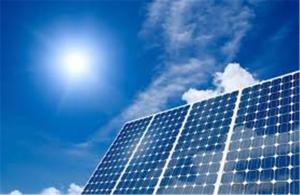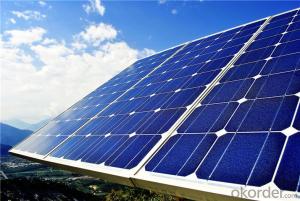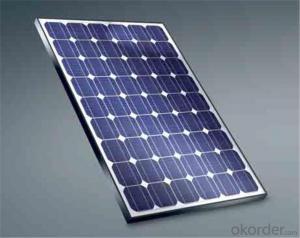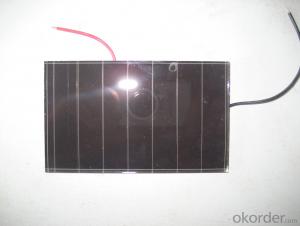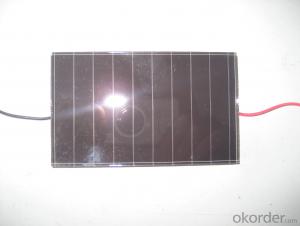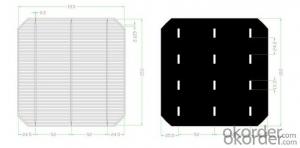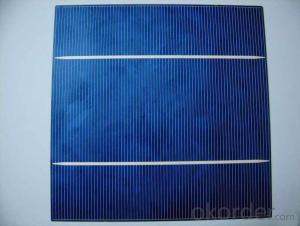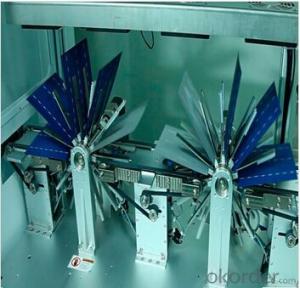240W Panel Solar for Home Use Solar Power System
- Loading Port:
- China main port
- Payment Terms:
- TT OR LC
- Min Order Qty:
- 10000 watt
- Supply Capability:
- 20000000 watt/month
OKorder Service Pledge
OKorder Financial Service
You Might Also Like
Destription:
Solar panel refers to a panel designed to absorb the sun's rays as a source of energy for generating electricity or heating. A PV module is a packaged, connected assembly of typically 6×10 solar cells. Solar PV panels constitute the solar array of a photovoltaic system that generates and supplies solar electricity in commercial and residential applications.
Main Characteristic
1.Manufactured according to international quality and Environment Management
System (ISO9001, ISO14001)
2. By the high transmittance, low iron tempered glass, anti-aging of the EVA(polyethylene - vinyl acetate), high-performance crystalline silicon solar cells, good Weather resistance TPT (fluoroplastics composite membrane) by pyramid , has a good Weather resistance and anti-UV, hail, water-proof capacity.
3. OEM and customerized package are accepted
4. High efficiency crystalline silicon solar cells
Quality warranty
1.10 years limited warranty on material and workmanship
2. more than 90% power output in 10 years
3. more than 80% power output in 25 years
Product show


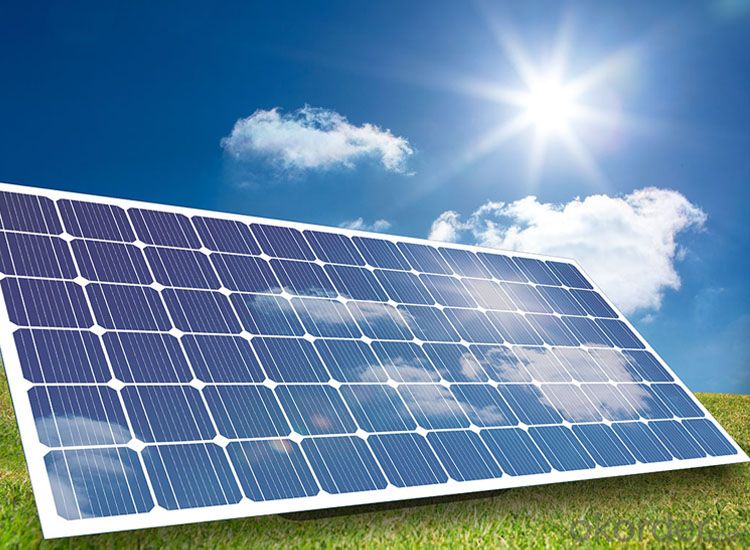


- Q:Are solar silicon wafers affected by extreme weather conditions?
- Solar silicon wafers are generally not significantly affected by extreme weather conditions. They are designed and manufactured to be durable and resilient against various environmental factors such as temperature fluctuations, humidity, and UV exposure. However, it is worth noting that extreme weather events like hailstorms or tornadoes can potentially cause damage to solar panels, including silicon wafers. To mitigate any risks, solar installations are often engineered with protective measures such as tempered glass, anti-reflective coatings, and sturdy mounting systems to ensure their longevity and performance even in harsh weather conditions.
- Q:What are the different materials used for passivation layers in solar silicon wafers?
- The different materials used for passivation layers in solar silicon wafers include silicon nitride (SiNx), aluminum oxide (Al2O3), and silicon oxide (SiOx). These materials help reduce surface recombination and enhance the efficiency of solar cells by preventing unwanted carrier losses.
- Q:How does the efficiency of a solar silicon wafer change with temperature?
- The efficiency of a solar silicon wafer generally decreases with an increase in temperature. This is primarily due to the inherent characteristics of silicon material, as its electrical conductivity reduces at higher temperatures. As a result, the ability of the wafer to convert sunlight into electricity diminishes, leading to a lower overall efficiency. However, it is important to note that advancements in solar cell technology and the incorporation of temperature management techniques can help mitigate this efficiency loss and enhance the performance of silicon wafers even at elevated temperatures.
- Q:How is a power output measured in a solar silicon wafer?
- The power output of a solar silicon wafer is typically measured by connecting it to a load resistance and measuring the voltage and current generated by the wafer. The power output is then calculated by multiplying the voltage and current values.
- Q:How do solar silicon wafers perform in low-light conditions?
- Solar silicon wafers perform relatively well in low-light conditions due to their ability to capture and convert even small amounts of sunlight into electricity. However, their efficiency decreases as the intensity of light decreases, resulting in a lower power output compared to bright sunlight conditions.
- Q:How does the thickness of a front contact affect the efficiency of a solar silicon wafer?
- The thickness of a front contact on a solar silicon wafer directly affects the efficiency of the wafer. A thicker front contact can reduce the efficiency of a solar cell because it can increase the amount of light that is reflected off the surface of the wafer, preventing it from being absorbed and converted into electricity. On the other hand, a thinner front contact can improve efficiency by allowing more light to be absorbed and utilized by the solar cell. Therefore, finding the optimal thickness for the front contact is crucial in maximizing the efficiency of a solar silicon wafer.
- Q:Are there any regulations or standards for solar silicon wafers?
- Yes, there are regulations and standards for solar silicon wafers. These regulations ensure the quality, efficiency, and safety of solar silicon wafers used in the production of solar panels. Standards such as the International Electrotechnical Commission (IEC) and the Semiconductor Equipment and Materials International (SEMI) set guidelines for various parameters including size, thickness, purity, and electrical properties of solar silicon wafers. Compliance with these regulations and standards is crucial for the reliable and effective functioning of solar panels.
- Q:What is the role of anti-reflective coatings on solar silicon wafers?
- The role of anti-reflective coatings on solar silicon wafers is to minimize the amount of light reflection on the surface of the wafers. This coating allows a higher percentage of sunlight to be absorbed by the solar cells, increasing the overall efficiency of the solar panel. By reducing reflection, the anti-reflective coating helps maximize the conversion of sunlight into usable electricity.
- Q:How are solar silicon wafers protected from vandalism?
- Solar silicon wafers are typically protected from vandalism by installing them in secure locations, such as rooftops or fenced-off areas, that are difficult for unauthorized individuals to access. Additionally, some solar installations may employ security cameras, alarms, or other monitoring systems to deter and detect any potential acts of vandalism.
- Q:How are defects in solar silicon wafers detected and minimized?
- Defects in solar silicon wafers are detected through various methods such as visual inspection, microscopy, and electrical testing. Visual inspection involves examining the surface of the wafers for any visible defects like cracks, scratches, or impurities. Microscopy techniques like scanning electron microscopy (SEM) are used to further analyze the wafers at a microscopic level, identifying any structural or material defects. Additionally, electrical testing is performed to evaluate the electrical properties of the wafers, ensuring they meet the required specifications. To minimize defects, manufacturers employ stringent quality control measures during the production process, use high-quality raw materials, and implement advanced purification techniques to purify the silicon.
1. Manufacturer Overview |
|
|---|---|
| Location | |
| Year Established | |
| Annual Output Value | |
| Main Markets | |
| Company Certifications | |
2. Manufacturer Certificates |
|
|---|---|
| a) Certification Name | |
| Range | |
| Reference | |
| Validity Period | |
3. Manufacturer Capability |
|
|---|---|
| a)Trade Capacity | |
| Nearest Port | |
| Export Percentage | |
| No.of Employees in Trade Department | |
| Language Spoken: | |
| b)Factory Information | |
| Factory Size: | |
| No. of Production Lines | |
| Contract Manufacturing | |
| Product Price Range | |
Send your message to us
240W Panel Solar for Home Use Solar Power System
- Loading Port:
- China main port
- Payment Terms:
- TT OR LC
- Min Order Qty:
- 10000 watt
- Supply Capability:
- 20000000 watt/month
OKorder Service Pledge
OKorder Financial Service
Similar products
New products
Hot products
Related keywords
